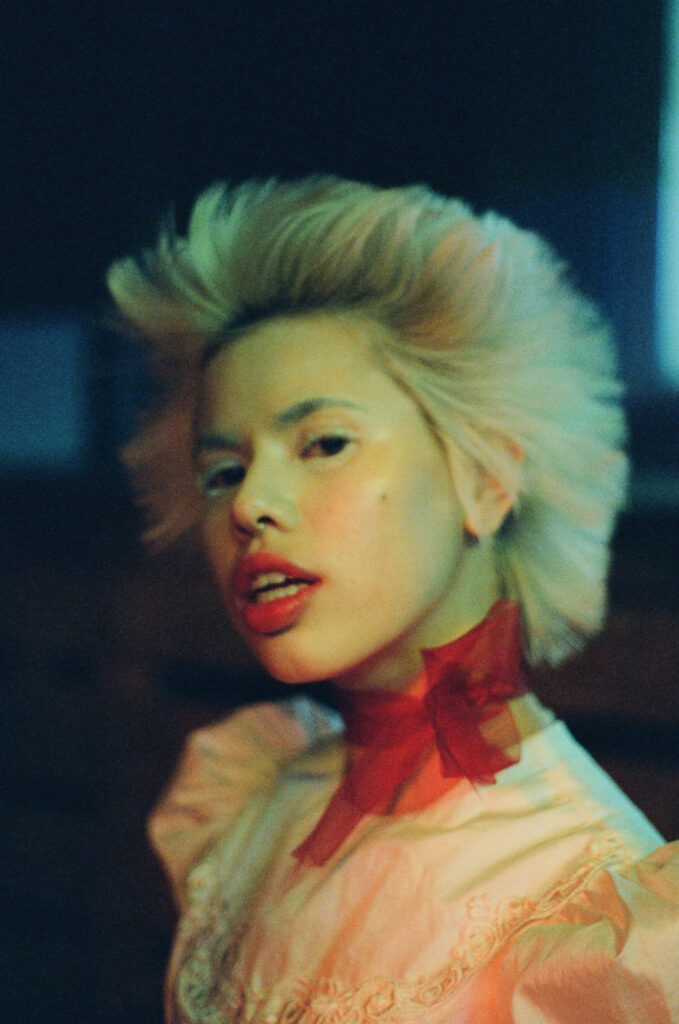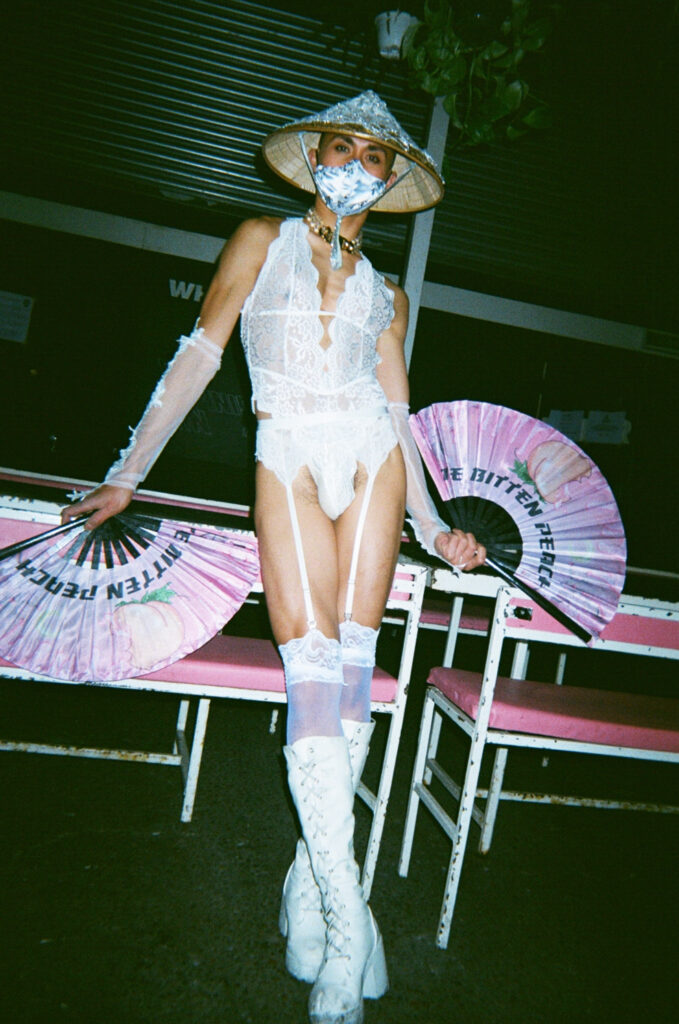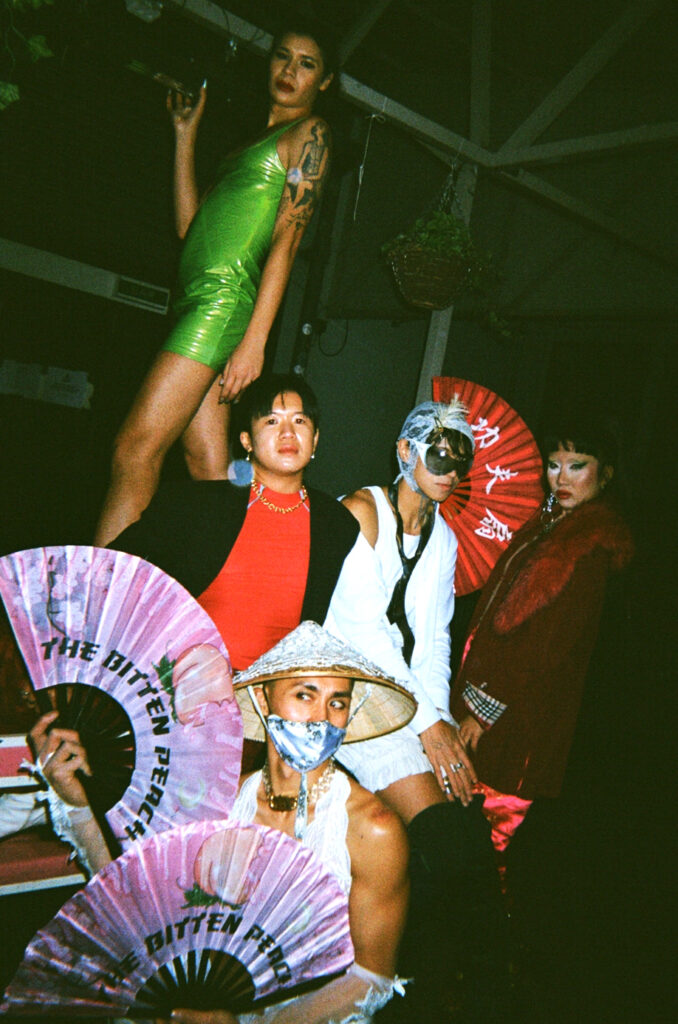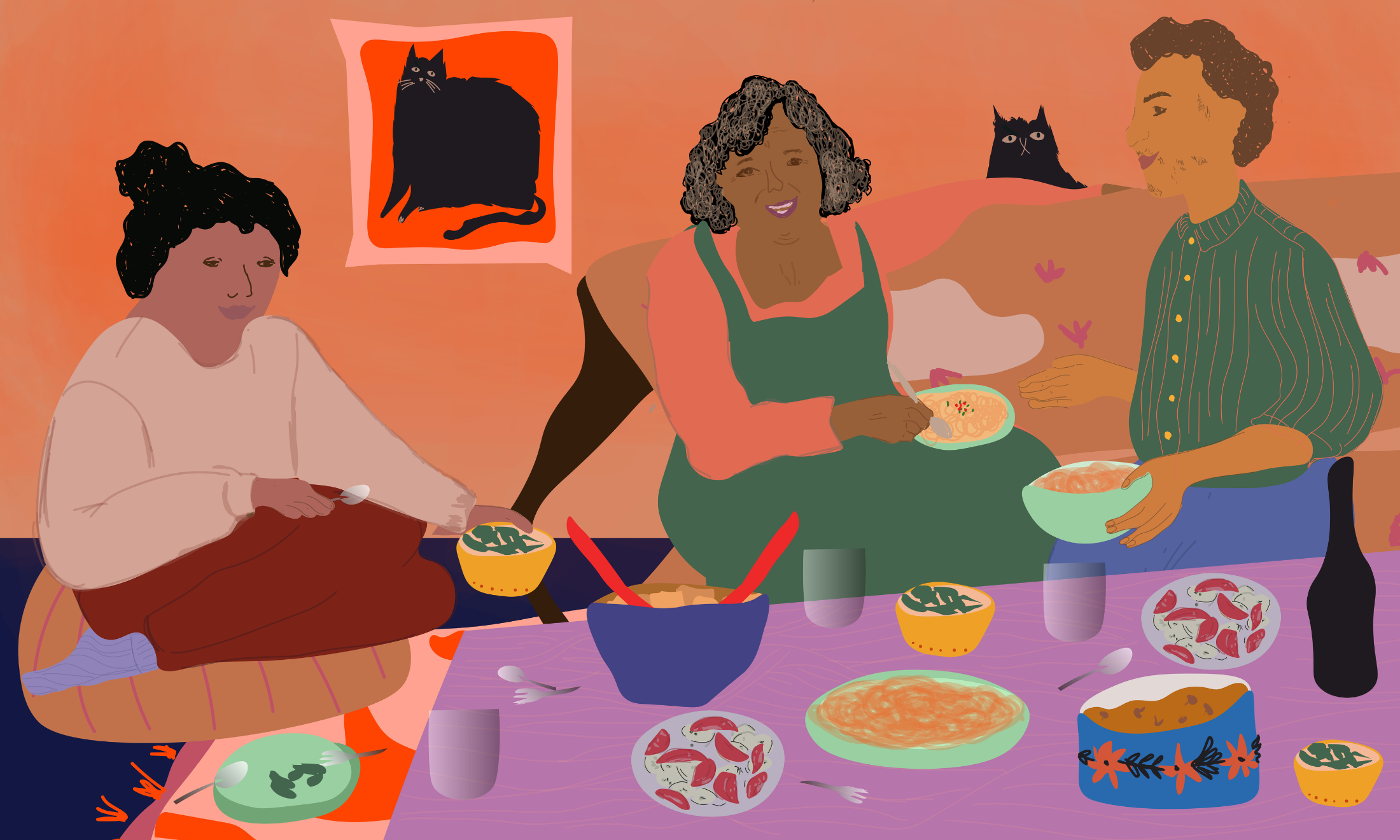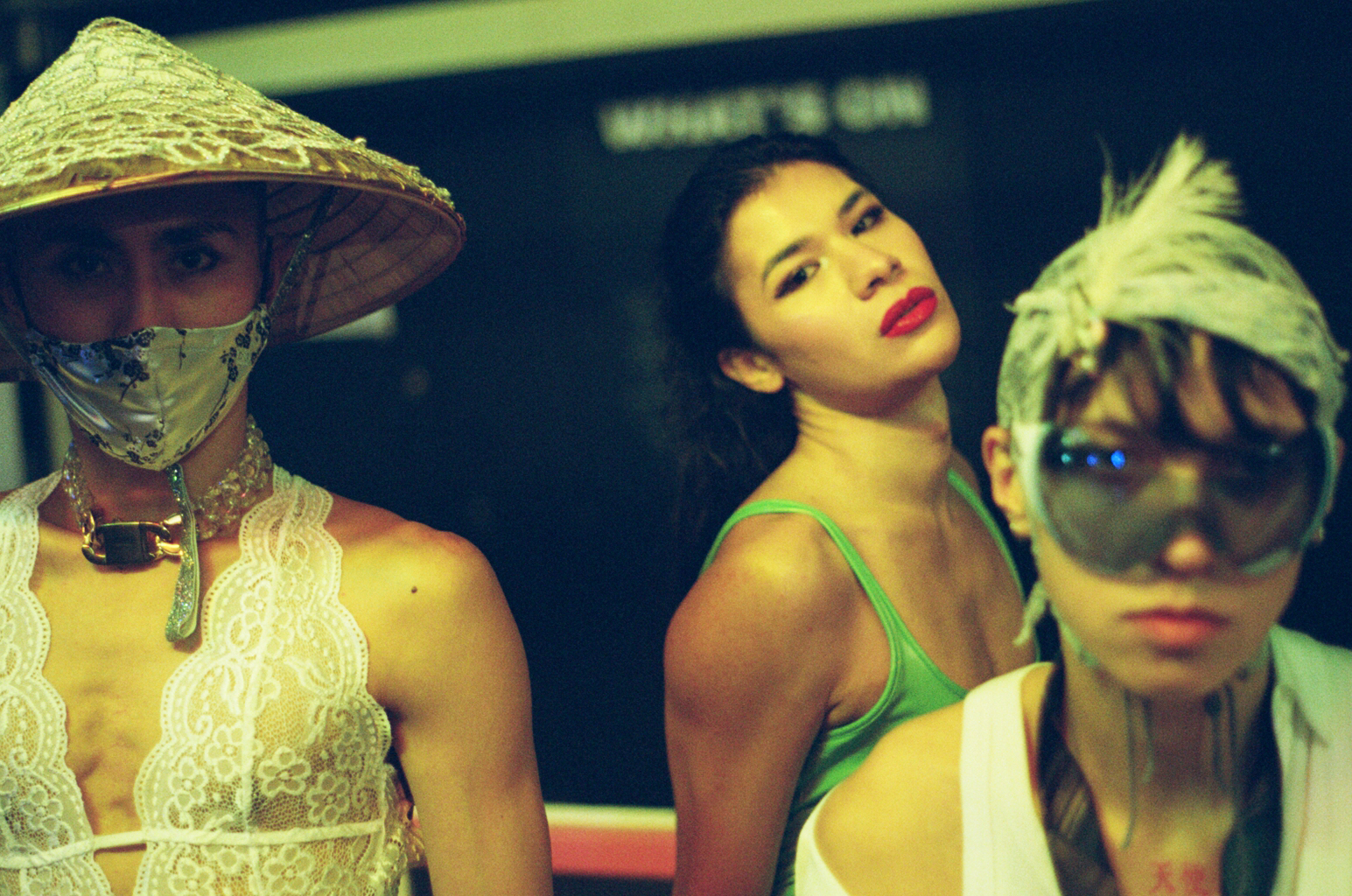
Ella Frost
The uninhibited spirit of GGI, London’s queer ESEA rave
The dancefloor is a site of liberation and celebration at this new London night.
Cici Peng
31 Mar 2022
Stepping onto the dancefloor at GGI’s (pronounced ‘kee’) Lunar Year Party in February was a kind of homecoming. We all vibrated to the shared rhythms as the DJ spun hard-hitting sounds of industrial club music with hints of East Asian hyperpop and touches of Gabber. Some dancers moved with a sharp ferocity, some dropped to the floor, bouncing on their knees. Some swayed to and fro, swimming in the melodies. We were all our own planets spinning in relation to the orbit of those around us.
Racialised people can find joy and healing through uninhibited movement, says June Lam, the founder of GGI, “the first queer ESEA rave night in London”, which started in December 2021. He created it as a space for healing and joy for the community, one that was missing from the city’s eclectic clubbing landscape. “I’m speaking from my personal journey of repairing ancestral traumas, through relearning how to be in my body, especially as a trans body, one that’s been chemically and surgically enhanced,” June Lam explains to gal-dem. “Through connecting to the bodies of my trans, Chinese and Vietnamese ancestors, I’ve found a sense of solace.”
For migrant cultures, joy is political. Often we feel a burden to prioritise adapting and simply surviving in new and challenging surroundings. Jex, a DJ from Eastern Margins, who opened the previous GGI night with a recorded set from Melbourne, tells gal-dem, “Having fun is a form of self-affirmation and resistance. It’s also part of our history – my mum grew up during the Cultural Revolution [in China in the 1960s and 1970s], where freedom to self-expression was actually illegal.” When pragmatism is often valued as a tool of survival for Asian communities, older generations can often see partying as a frivolous choice.
GGI ran its second night on Lunar New Year, a celebration usually spent with our families. But, for many ESEA migrants who have faced the travel restrictions of the past two years, many of us haven’t seen our families for years. Frances, an attendee, gestures around the circle formed in the warm red glow of the smoking area and tells me, ‘I’ve been missing home so much, especially today, and this has eased my homesickness, meeting so many people who know how I feel.” GGI helps us create a chosen family, for those far away from their families or those who are unable to be their full selves with them. Sian, another attendee of the night, who tells me that GGI is “a reminder not to get used to the margins”.
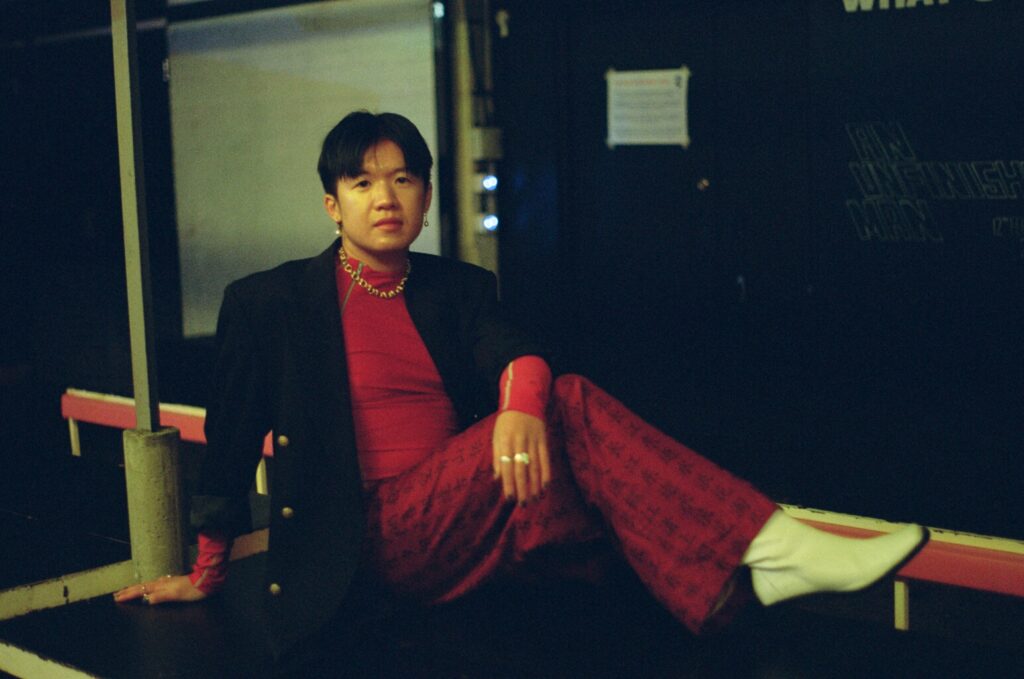
A crossroads in multiple senses, it’s a site for chance encounters. The word attendees used most often to describe how the night made them feel was ‘held’. To be held is to be protected, to be kept up in a world that seems often indifferent to you. You can’t help but wonder, how often do you speak to a stranger with such familiarity?
You can also expect live musical performances and film screenings as GGI evolves to become a breathing archive of the people who have come to celebrate each other and be celebrated. Having previously been involved with Asia Art Activism and Remember and Resist – grassroots ESEA collectives which are involved in activism and political organising – June explains that the creation of GGI was a natural extension for him, as both GGI and these ESEA collectives are centred around community care.
For queer communities especially, the club is a timeout from the exhaustion of adhering to normative expectations. The hostess of the night, June Bellebono, expresses how raving gives her a “release that’s vital to my well-being”. However, if dancefloors are meant to be sites of cathartic liberation, it’s important to reconsider who is permitted the space to simply be.
“Having fun is a form of self-affirmation and resistance”
Racial traumas of being fetishised and overlooked are replayed too often in white-dominated queer club spaces and GGI reckons with the hyper-vigilance needed to create a safe space to dance without inhibition, without feeling Othered. As June Lam explains, “Queer club spaces are still informed by Eurocentric optics of desirability, which marks out Asian bodies as either super visible or super invisible. It’s this double consciousness of seeing yourself through the eyes of society.”
June L brought his previous experience working in the nightlife industry as an artist liaison, working at the door and the bar at nights including Pxssy Palace, The Glory, Dalston Superstore and We Exist, a trans* led organisation that provides a platform for trans* people to share their work, into the making of GGI. He explains how the club has historically been a site of cultural change. GGI is making the club a safe space for queer Asian identities through re-educating security on how to honour the sanctity of different identities. “I’ve implemented preventative messaging to discourage offensive and fetishistic outfits and I also know it’s important that we don’t split people up into genders, or we make sure that sure there’s a trans person at the door to check IDs if a trans person doesn’t want to show a cis person their ID.”
GGI is not about taking up space but going beyond, to celebrate the fact that we already have a burgeoning eco-system. “These places exist. It’s not a reactionary response to oppression; it’s actually about shining a light on these spaces. It’s about showing the rest of the world that we matter and deserve more visibility,” June says.
Music has the power to transcend time and language, taking us backwards or pushing us forward. Hearing Faye Wong played alongside the propellent noise of industrial and PC Music reveals the diverse range of influences with no homogeneous source. Collaborating with Eastern Margins and The Bitten Peach, GGI is about uplifting the community with help from one another, weaving together a growing web of EA and SEA talent. For their next event on 1 April, GGI is combining multidisciplinary art forms, with a film screening, a musical performance and four DJ sets lined up. Looking towards the future, June L is hoping to expand GGI beyond London to other parts of the UK in Leeds and Manchester. With travel restrictions lifting, he is also hoping to pull up to parties in Vietnam and Thailand to seek out talent and stay authentic to uplifting those communities.
“It’s euphoric, being here, losing ourselves to the music, being alone together is such a gift”, says DJ Larasati who graced the Lunar Year Party with a set that rocked the ground with fast-paced, undulating rhythms and a heavy bass that vibrated through your core. The key tenets of ESEA cultures are based on community and interdependency, each lifting the other up. By dancing together, we are continuing this legacy. As June says, “We are making our ancestors smile.”
*This article was amended on 1 April, 2022 to state that June Lam has previously been involved with Asia Art Activism. An earlier version mistakenly stated that he was involved with Daikon.

